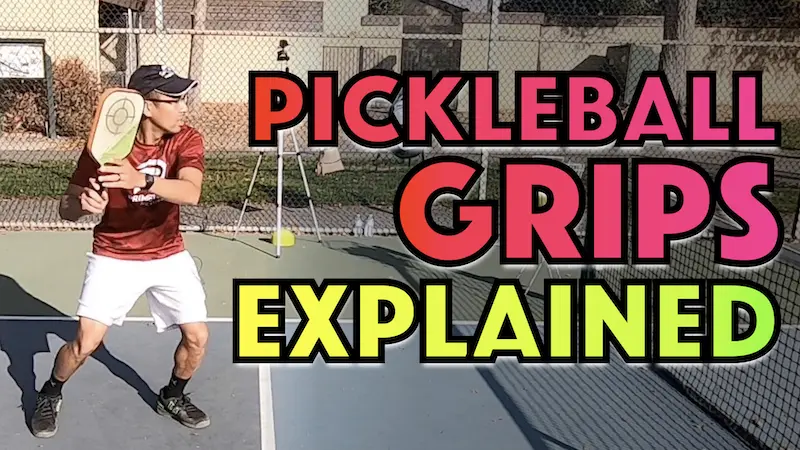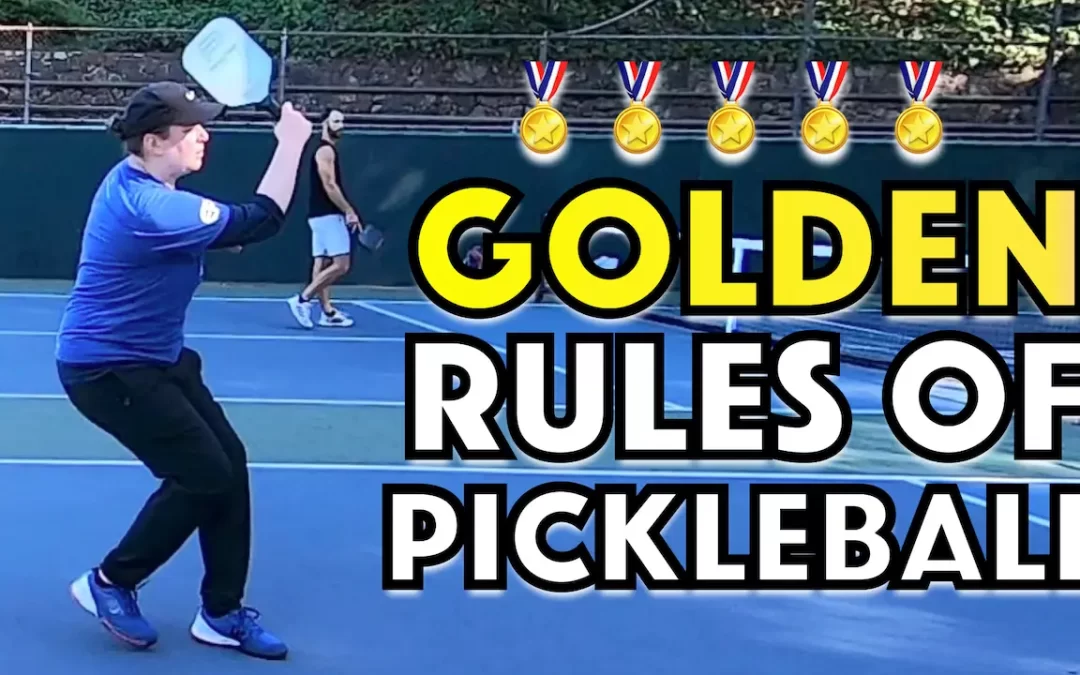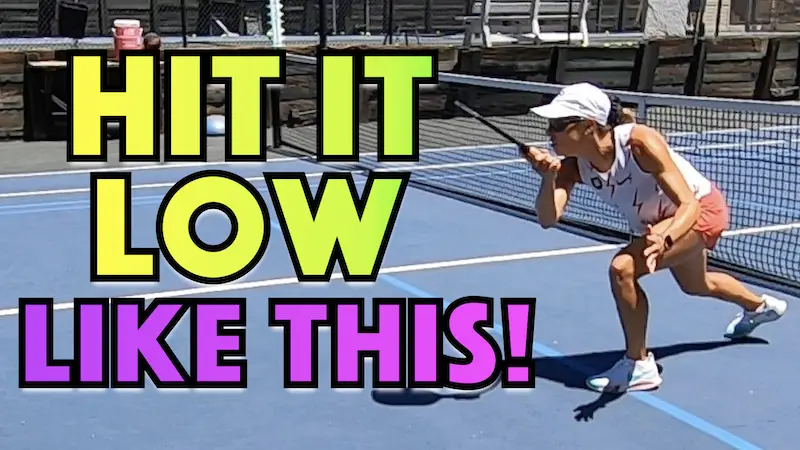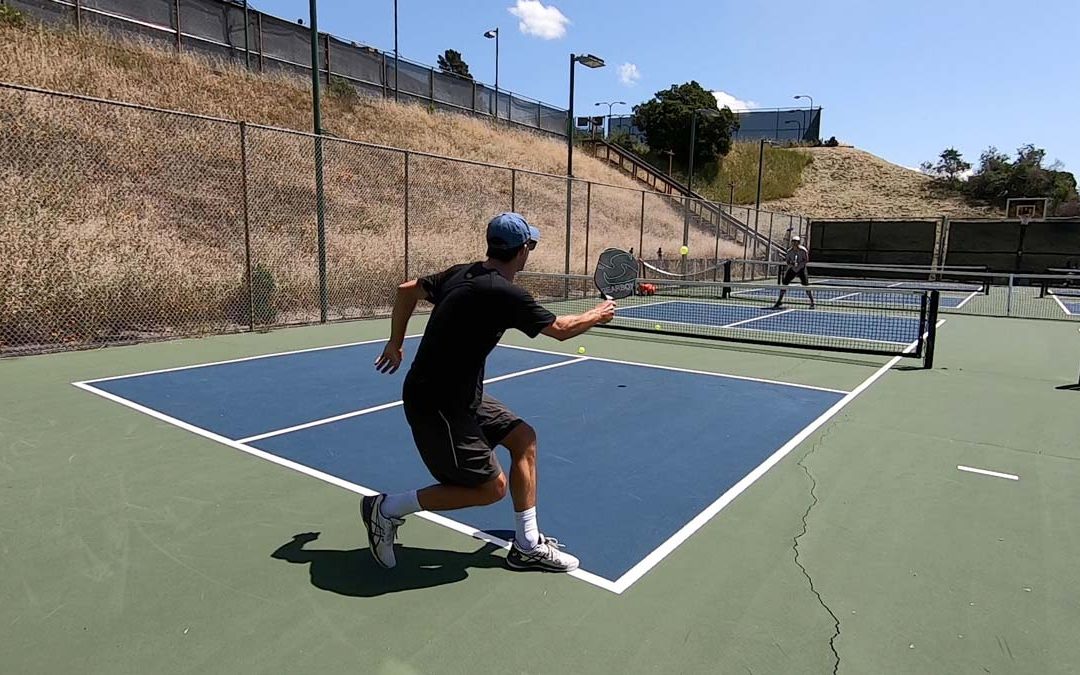If you’ve watched our channel for any length of time or seen practically any video about pickleball, it quickly becomes clear that one of the main objectives in doubles pickleball is to get both you and your partner, as a unit, up to the NVZ line as quickly as possible.
That’s where you will control the point and have the best chance of winning.
However, there are certainly times when it’s ok, and actually preferable and more advantageous, to step back off the line.
Pickleball strategy does not exist in a vacuum. You have to be flexible and adapt to the situation at hand. Sometimes that situation will call for you to step back so that you can move forward in the point.
In this video/blog, we cover 5 scenarios when it’s a good thing to step off the line. Check it out and try it out. You’ll be surprised how effective it can be to step off the line when the situation calls for it.
Scenario #1 – You Get Lobbed
The very first scenario where it’s going to be okay to back up off the line is if you get lobbed.
I have my friend Caden here, we’re going to get in to a dinking rally. We’re dinking here and he lobs me. So, obviously I’m going to have to try to retrieve that lob and make it back up to the net.
This scenario may be a bit obvious but who I’m talking about more specifically is those players who don’t have that much mobility or who have a hard time getting back quickly in the court.
Sometimes you will run into a team that loves to lob. In this case, if you keep getting beat by those lobs, I suggest to maybe take a step back or two and play a little off the non-volley zone line to give yourself some time.
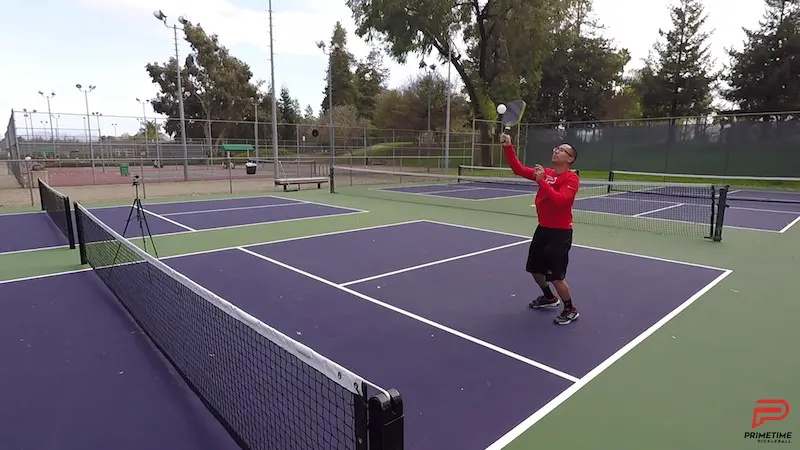
If I’m playing from here (a stop or two back from NVZ line) and Caden tries to lob me, I now have a little bit of room to see what he’s going to do and I don’t have to move back as far then if I hadn’t already been set a few feet back from the line.
That’s the first scenario where it would be okay to come off the non-volley zone line and back up.
Scenario #2 – Misjudge Dept Of The Ball
The second scenario where it would be okay to back off the non-volley zone line (and you’ll see this even with the top pros) is when you misjudge the depth of the ball.
Let’s say Caden and I are in a dink rally and I’m leaning in at the net, trying to be offensive and trying to find a high ball. I misjudge one and I have to take a step back and then make sure that I come back up.
*If you watched any of our previous videos you would have seen that it’s really vital that you try to lean in at the net so that you can be offensive at the net.
I’m trying to volley this ball and it lands a little bit deeper than I think, I have to back up because if I don’t back up I’ll be contacting the ball too close to my body and that’s a potential pop up.
So, what I’ll do if I misjudge that ball I just take a step back hit it with contact out in front of me and I just have to hit a good unattackable dink so that I can come back up.
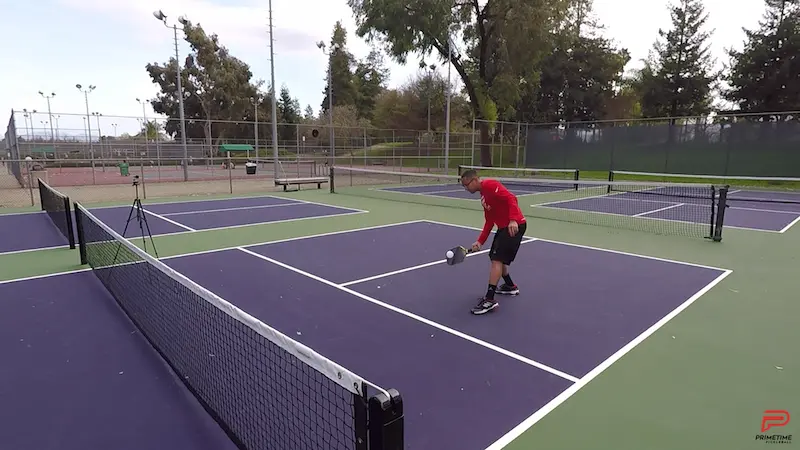
We’re not going to guess correctly where the ball is going to land every single but let’s say I’m a little late, I want to take that step back and then come back up to the net as soon as I can.
Scenario #3 – Getting Beat With Speed
The third scenario in which it’s okay to back up off the non-volley zone line is when you are playing against players that are killing you with pace and speed, or if they really have these tricky misdirection shots.
Let’s say you’re just getting beat with players that love to speed up the ball on low shots and you can’t handle it, sometimes it’s good idea (like the lob scenario) to maybe play a foot or two back up off the line.
This is going to give you a good amount of extra reaction time so that you can see the ball.
Live Practice Scenario– Let’s dink a bit. Let’s say if I was right up at the line. My opponent likes to speed it up. Sometimes I won’t be ready for that and if I know that I can’t handle that pace I can try to just play off the line a bit.
Two Disadvantage Of Playing Off The Line
There’s two disadvantages of playing off the line.
The first one – if I’m all the way up at the line, this is the most offensive position I could be in, I could just poke volley these balls and I could really be aggressive on any dink that’s deep. If I’m not all the way up at the line I’m giving up some offensive play.
The second one – if I’m not all the way up at the line there’s more court for my opponent to hit down at my feet. If I’m not all the way up there’s more court that’s exposed.
Those are two disadvantages.
But, if you cannot react to the balls or if your opponents are really firing the balls away and they are hitting it really fast with a pace that you can’t handle, sometimes it’s okay to play off the line a bit.
You’ll be surprised what that one foot to two feet does with your reaction time.
That’s one of the things you could try if you’re getting beat with the pace of your opponent’s at the net.
Scenario #4 – Offensive Groundstroke Opportunity
The fourth scenario when it’s okay to back up off the none volley zone line is in order to get ready and in position to hit an offensive shot.
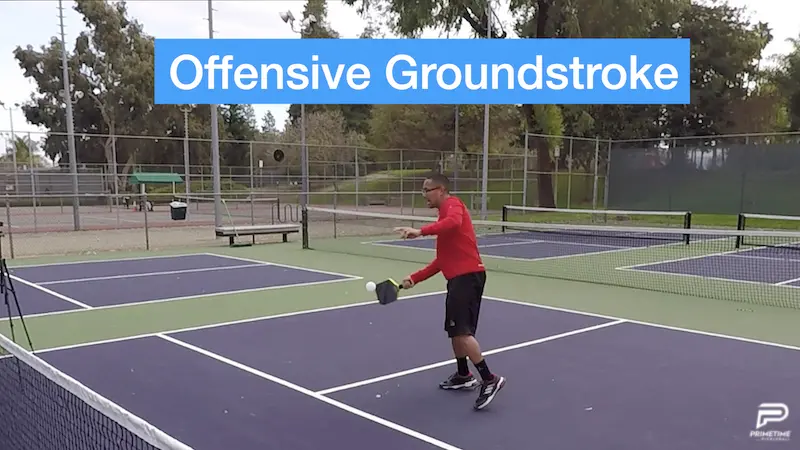
Let’s say Caden serves from the baseline, I return and come into the net and Caden is now hitting his third shot. A lot of times if he doesn’t drive that ball he’s going to try to drop that third into into the non-volley zone.
So he’s he’s trying to hit this third shot into the kitchen and I’m trying my best to hold my line and keep it deep. My main thing is I’m either trying to put it away or keep him back.
Some of these shots that he’s hitting I could step back a bit, get my feet into position, and hit a ground stroke to really put extra pace on that ball.
Instead of me leaning in and trying to volley from a low point, let’s say if he’s hitting good third shot drops, I could step back instead and then push forward and hit a solid groundstroke to try to keep him back.
If it’s a third and it’s high I can take a step back and really put a lot of pressure.
There’s really two ways when somebody is hitting their third shot: you’re either right up at the line and you’re trying to roll shots or trying to volley hard shots.
But, if they’re hitting really good thirds and if you have good ground strokes, you could really try to keep that pace to the end and the depth of the court and you can try to step back and hit that ground stroke.
Scenario #5 – Defensive Scramble
The fifth scenario in which I would say it’s okay to back up is going to be when you’re playing defense.
Now, in a game, obviously you and your partner are going to have the best control of the point at the net.
Sometimes you and your partner are scrambling and you get pushed off the non-volley zone line and basically your opponent gets balls to hit down at your feet.
So, sometimes what’s going to happen is I’m going to either pop up a ball and my partner and I could find us vulnerable for an attack.
Let’s say our opponents push us off the line and we’re scrambling. I can take a step back to give me some reaction-time and then I try to capture the net and get back up to the non-volley zone.
If I get pushed off and I hit a really high one, I’m trying to give myself a little bit more time to see that ball and to get back into the point.
The main thing is you don’t want to be backing up while while you’re hitting. That’s going to cause more errors and it’s going to pop the ball even more.
If I have enough time to back up and then set my feet before my opponent hits that ball then that’s okay.
They’re going to have more court to hit on because I’m further back in the court but it’s going to give me a little bit more reaction time as I’m farther from the contact point of the ball.
If you’re playing defense and you want to take a step back, if you have enough time, make sure you set your feet, hit that ball and then eventually your goal is to come back up with your partner to take control of the net.
Those are the five different scenarios in which it’s okay to take a step back off the non-volley zone or to back up in the middle of a point.
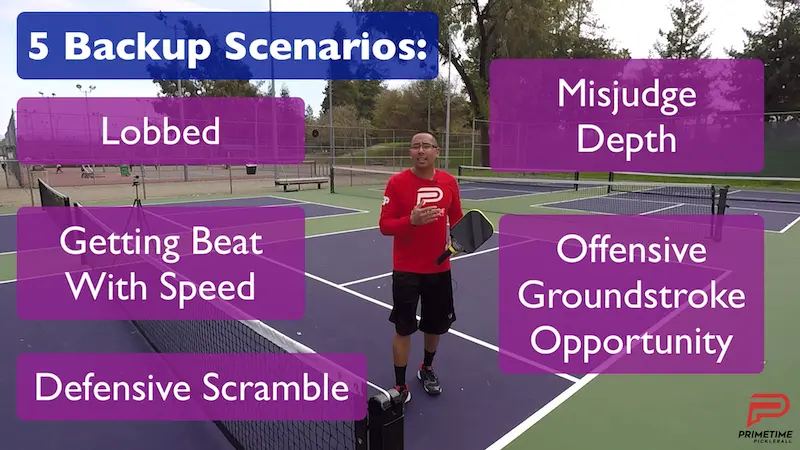
Generally, of course, you want to be up at the net controlling the point and controlling the net as a team.
You want to be up at the non-volley zone line as much as you can but in those certain scenarios you don’t have to be glued to the non-volley zone line.
Even if you watch the top pros, those guys will take a step back every once in a while so that they can put themselves in a better position in that point.
We hope you enjoyed this video/blog! Happy Pickeling!


